Canyons of the Ancients
May 24 - Canyons of the Ancients Museum Complex - #46-2024
NATUREDISCOVERIES
Al & Tom
5/30/2024
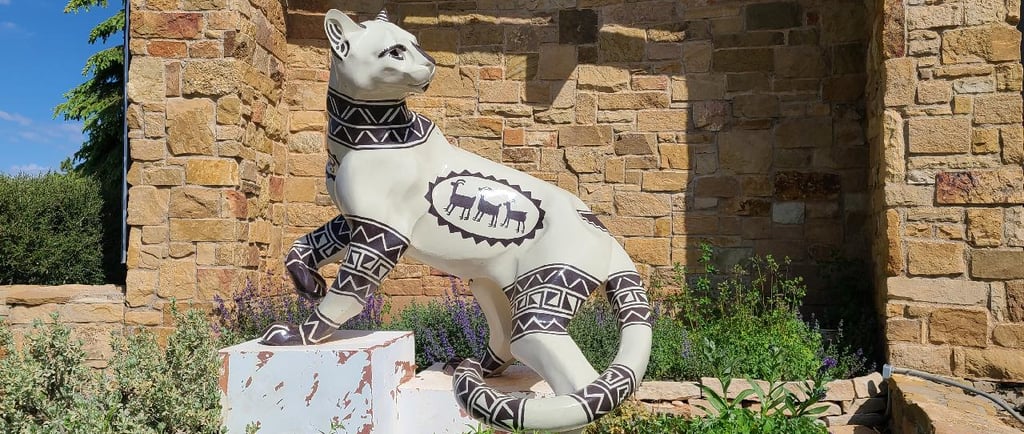

With all our recent talk about Hovenweep, the National Monument lands of it and Canyons of the Ancients are interwoven with each other, making the Canyons of the Ancients Museum and Visitor Center near Dolores, Colorado, in line for us to visit. It is formerly known as the Anasazi Heritage Center. The museum incudes intricate artifacts from the monument as well as interactive displays and recreations. The volunteers and rangers were all helpful and knowledgeable, but for the questions we were asking, they all said “talk with Bonnie, she knows everything.” They were right! With her we shared experiences of ruins, cliff dwellings, and petroglyphs, while she informed us of many archaeological locales in the area. We appreciated the chat!
Canyons of the Ancients National Monument was established on June 9, 2000, by proclamation of President Bill Clinton. It encompasses a vast landscape that has been inhabited for thousands of years. They have documented over 8,500 archaeological sites to date, and estimate that there could be over 30,000 total within the monument. It is hard to believe that some of the places within have survived prior to federal protection, but it is nice knowing that the monument includes 176,000 acres of land (more than three times that of Mesa Verde National Park). In recognition of the agricultural and lifestyle stories beyond simply the ruins. I find it admirable that current descendants can come and reflect without conflict, while also making it respectfully accessible for all of us.
Walking up to the visitor center, we passed the ruins of a small three-room house known as the Dominguez Pueblo. It includes an underground earth-walled kiva that has been reburied to protect it from erosion and collapse. From the size of it, they say it would likely have been a home for one family. Behind the museum, sitting atop the river valley, the second ruin is the Escalante Pueblo. It was a home of significantly more rooms with a central round kiva. To me it is an ideal location, having a reliable water source near, a high view for migratory wildlife hunting opportunities and defensive outlooks. I found the up-close exploration was extraordinarily intimate, as long as we adhered to the rules of not touching anything or walking on the walls.
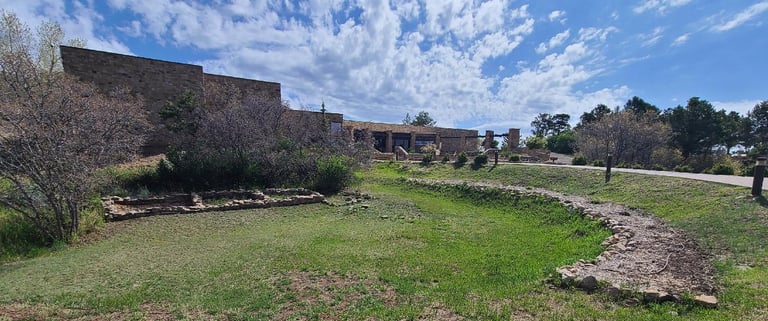

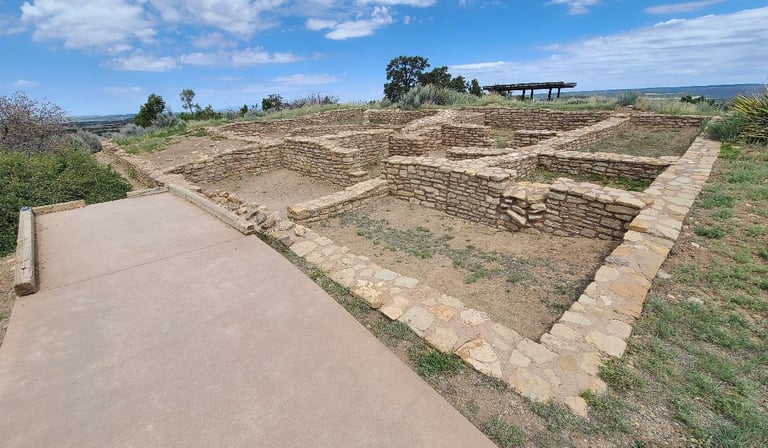

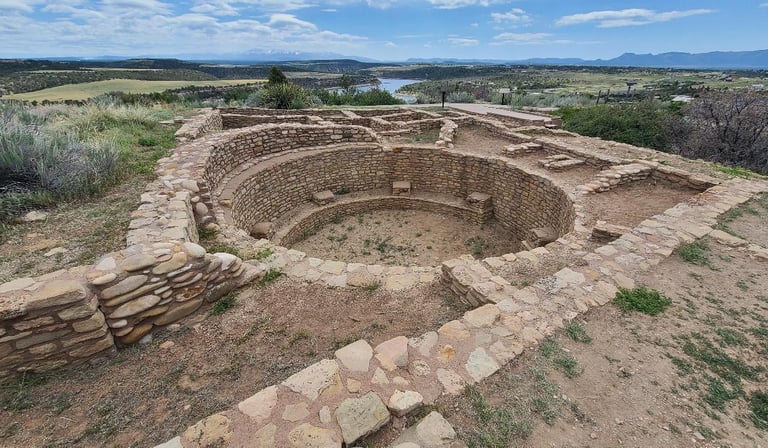

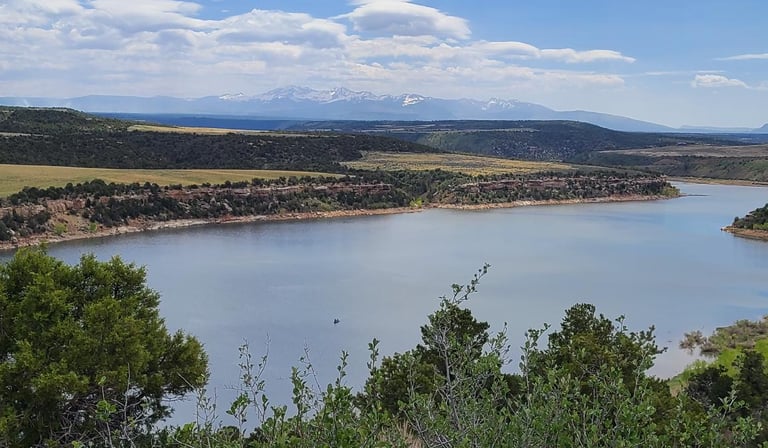

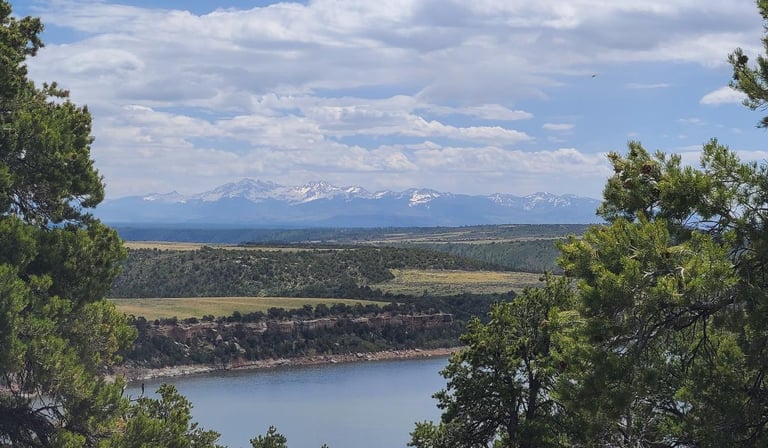

A winding path, that is handicap accessible, leads to the top of the hill where the Escalante Pueblo is situated. Many signs along the way described the plants we were seeing and how they were used as well as their relationships with several animals who were considered more as relatives and less as wildlife. They would burn the junipers and then the sagebrush for cooking and warmth, but revered the pinon pine as it provided them with food, medicine, and building supplies. Hummingbirds brought the secret of fire, chipmunks planted a tall reed for them to climb in their upward journey, and ants taught generosity by sharing their food in time of famine. We ought to learn from them to be so resourceful, respectful, and less wasteful.
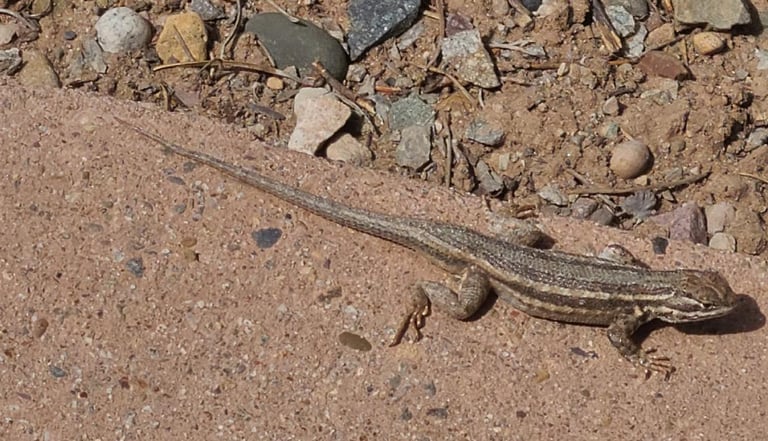

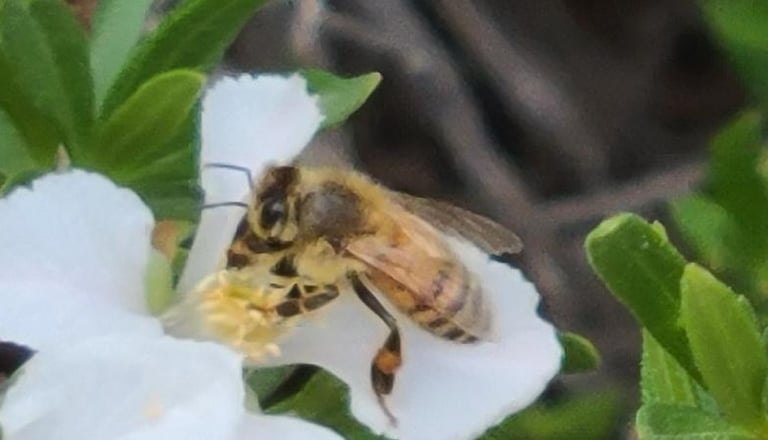

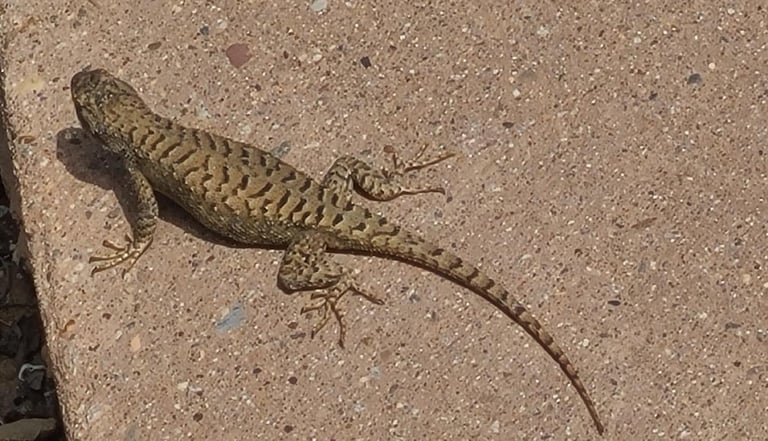

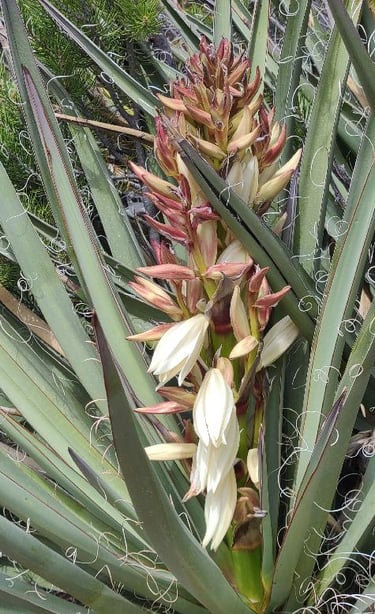

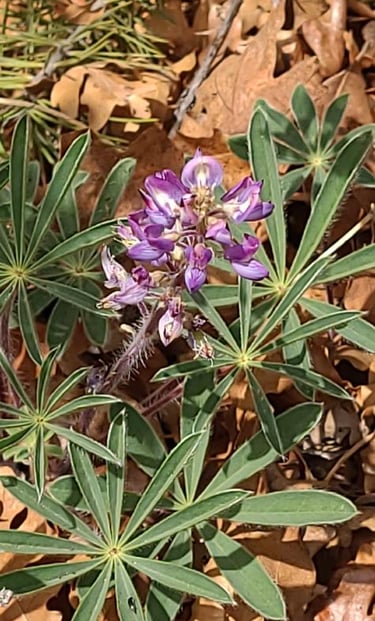

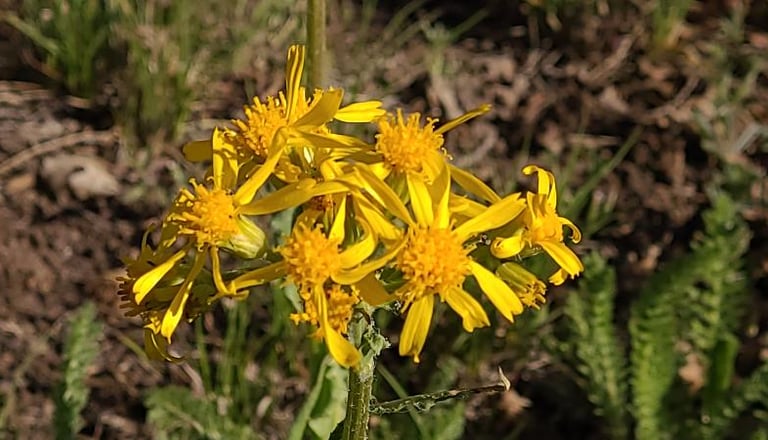

I am glad we made this stop. It was unexpected that the Escalante Pueblo would be so close and accessible. The views from up top were expansive, and I was able to see more flowers, lizards, and bees along the trail. The museum is well worth the nominal entrance fee, but the fee is waived with your America the Beautiful National Park Pass. I can’t recommend enough that one should take a vacation to Southwest Colorado/Southeast Utah to experience these cultural sensations for themselves. You will not be dissatisfied. Come experience it for yourself!
Share your comments on Facebook or email us at roadfronts@gmail.com
Subscribe for monthly updates
Current location:
